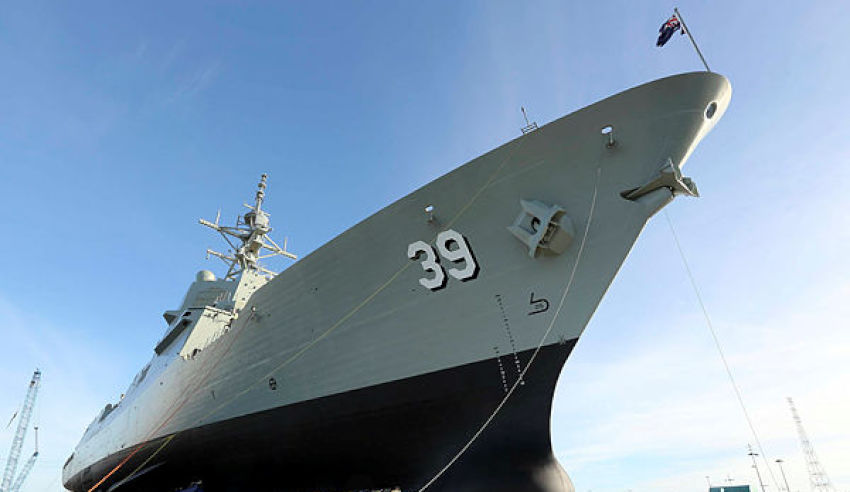Defence Minister Linda Reynolds and Defence Industry Minister Melissa Price have announced $75 billion investment over the next decade into the Royal Australian Navy as part of the Commonwealth’s record $270 billion defence investment.
To continue reading the rest of this article, please log in.
Create free account to get unlimited news articles and more!
This significant investment builds on the government’s 2017 Naval Shipbuilding Plan, and will enhance Australia’s warfighting capabilities across its operations.
Following today’s announcement of additional acquisition and upgrade plans in the 2020 Force Structure Plan, the Naval Shipbuilding Plan now encompasses over 70 vessels to be built here in Australia, with more opportunities in the future.
Defence Minister Linda Reynolds explained that as the future geo-strategic environment evolves, so must Defence’s plans to grow, update and evolve its naval force.
"For our Navy, the five cornerstones of contemporary naval power – strategic deterrence, sea control, decisive lethality, projection of power ashore and naval presence – remain central to our force design," Minister Reynolds said.
Consistent with this government’s Naval Shipbuilding Plan, Defence will continue with the build of:
- 12 Attack Class submarines;
- Nine Hunter Class frigates;
- 12 Arafura offshore patrol vessel; and
- 21 Guardian Class Pacific patrol boats.
Through the Force Structure Plan, the Morrison government will be investing in the following additional shipbuilding programs:
- Six new Cape Class patrol boats built in Western Australia;
- Up to eight new mine countermeasure and hydrographic survey vessels built here in Australia, with consideration for the vessels to be based on Navy’s Arafura design;
- Two new Australian-built multi-role sea-lift and replenishment ships;
- A replacement for the Young Endeavour youth scheme sail training vessel, built in Australia;
- Replacements for the Navy landing craft, carried by the LHD;
- A new vessel to support the Pacific Step-Up, built in Australia;
- The replacement for ADV Ocean Protector;
- A large salvage and repair vessel; and
- Construction of Army landing craft and riverine patrol vessels.
Minister Reynolds added, "Through our Naval Shipbuilding Plan we are delivering the ADF with a truly world-class maritime capability to protect maritime trade and the region’s security and prosperity. With 15,000 new Australian jobs set to be created under the 2017 Naval Shipbuilding Plan, this number will now grow even more with new opportunities being created for Australian defence industry to benefit from."
Since the release of the Naval Shipbuilding Plan, the government has already begun the construction of nine new vessels at Henderson and Osborne, and has delivered six Guardian Class patrol boats to six different Pacific island countries.
The government will also continue to invest in: new upgrades to the Hobart Class destroyers, Anzac Class frigates and Navy’s amphibious ships; the design of the future destroyer; as well as upgrades and life extension to the Collins Class submarines.
In support of Defence’s undersea combat and surveillance capability, next-generation systems including large un-crewed submersibles and undersea surveillance vessels are proposed.
To support a larger and expanded fleet, up to $12 billion will be invested in developing the infrastructure necessary to support the capabilities of our naval fleet during construction, operation and sustainment.
This includes expanded undersea warfare facilities, a new Army watercraft base and upgrades to key port and docking facilities.
To sustain our sovereign naval capabilities, the future of maritime sustainment in Australia is set to change, with a new plan to maximise Australian industry capability in defence industry’s national supply chain.
Defence Industry Minister Melissa Price said, "Building on our earlier commitments, these new naval vessels to be built right here in Australia will further strengthen our shipbuilding capability."
Navy’s recently announced Plan Galileo will further lay the foundations for an integrated, consistent approach to maritime sustainment by leveraging the opportunities made available through the government’s Naval Shipbuilding Plan.
"We’re talking about a generation of Australian jobs, and a substantial level of Australian industry involvement in these major acquisitions. We’re investing not only in the safety and security of Australia, but also in an Australian shipbuilding capability which represents thousands of opportunities for businesses right across the country," Minister Price added.
Through government funded initiatives such as the Naval Shipbuilding College, Defence will identify, recruit and build a pipeline of experienced workers around Australia which will support our national sovereign maritime sustainment capability.
Further detail on opportunities for Australia’s shipbuilding industry will be included in an update to the government’s Naval Shipbuilding Plan to be released later this year.

 Login
Login







